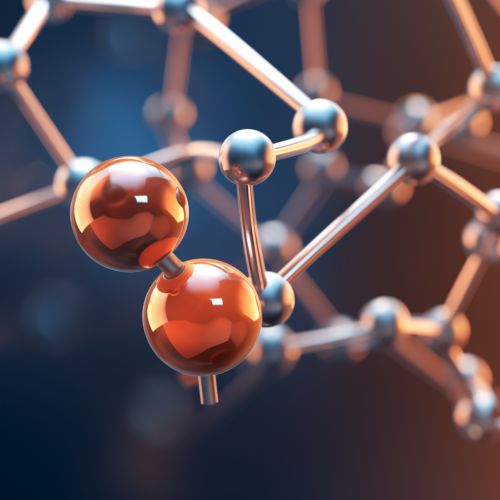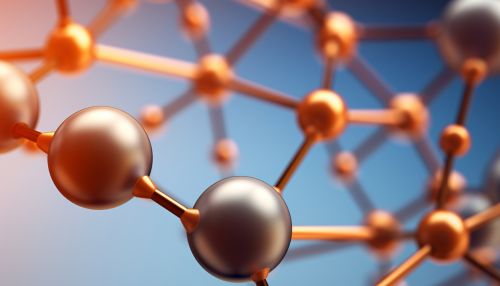Oxyferryl
Introduction
Oxyferryl, also known as Compound II, is a term used in biochemistry to describe a particular state of the Heme group, a component of various proteins and enzymes. This state is characterized by an iron atom in the heme group being in the +4 oxidation state, with an oxygen atom attached to it. The term "oxyferryl" is derived from the words "oxygen" and "ferrum", the Latin name for iron.
Structure and Properties
The oxyferryl state is characterized by an iron atom in the +4 oxidation state, with an oxygen atom attached to it. This state is highly reactive and is often involved in the catalytic cycles of enzymes. The oxygen atom in the oxyferryl state is usually in the form of a hydroxyl group (-OH), although it can also be a water molecule (H2O) or a peroxide ion (O2^2-).


Role in Biochemical Reactions
Oxyferryl is a key intermediate in many biochemical reactions, particularly those involving heme-containing enzymes. These enzymes, known as hemoproteins, include cytochromes, catalases, peroxidases, and oxygenases. The oxyferryl state is often involved in the catalytic cycles of these enzymes, facilitating the transfer of electrons and the activation of oxygen.
For example, in the enzyme cytochrome P450, the oxyferryl state is involved in the oxidation of organic substrates. The iron atom in the heme group of the enzyme is first reduced to the +2 oxidation state, and then reacts with molecular oxygen to form the oxyferryl state. This state is then able to oxidize the organic substrate, after which the iron atom returns to its original +3 oxidation state.
Significance in Biological Systems
The oxyferryl state is of significant importance in biological systems due to its role in various biochemical reactions. These reactions are crucial for many biological processes, including respiration, detoxification, and the biosynthesis of various molecules.
For instance, the enzyme cytochrome c oxidase, which is involved in the electron transport chain in mitochondria, utilizes the oxyferryl state in the final step of the process, where it reduces molecular oxygen to water. This reaction is essential for the production of ATP, the main energy currency of the cell.
Similarly, the enzyme myeloperoxidase, which is found in neutrophils and is involved in the immune response, also utilizes the oxyferryl state. In this case, the enzyme uses the highly reactive oxyferryl state to generate hypochlorous acid, a potent antimicrobial agent.
Research and Future Directions
Given its central role in many biochemical reactions, the oxyferryl state has been the subject of extensive research. This research has not only provided insights into the mechanisms of various biochemical reactions, but has also led to the development of various drugs and therapeutic strategies.
For example, research on the oxyferryl state has led to the development of drugs that inhibit the enzyme cytochrome P450, which is involved in the metabolism of many drugs. By inhibiting this enzyme, these drugs can increase the efficacy of other drugs and reduce their side effects.
Future research on the oxyferryl state could lead to the development of new drugs and therapeutic strategies. For instance, it could lead to the development of drugs that modulate the activity of enzymes that utilize the oxyferryl state, or to the development of biomimetic catalysts that mimic the reactivity of the oxyferryl state.
